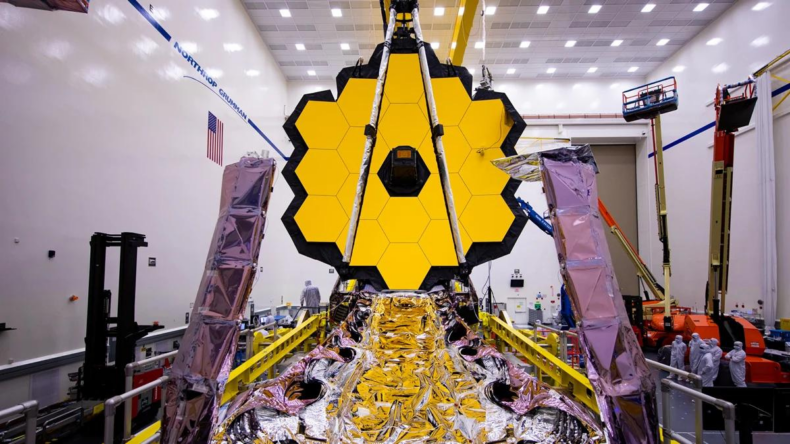James Webb Space Telescope will bring a new era in space exploration. Also known as JWST or Just Wonderful Space Telescope is an international joint venture led by NASA with its partners, ESA (European Space Agency) and the Canadian Space Agency (CSA).
This telescope will succeed the most famous space telescope, Hubble. This complex and revolutionary technology, JWST, will explore the formation of planetary systems by providing an infrared inventory; it is a very sensitive telescope that can detect very low levels of lights and detect data for advanced study cosmic theory.
Development of James Webb Space Telescope
The idea for JWST originated in 1996, then known as Next Generation Space Telescope (NGST), and it was renamed JWST in 2002. Due to many factors over the years, the launch was delayed.
NASA’s Goddard Space Flight Center, Maryland, led the project to develop, manage, and integrate the observatory. It also provided Integrated Science Instrument Module (ISIM). John C. Mather is the lead scientist of the project.
This project was a collaboration where many manufactures provided different components for this spacecraft. Northrop Grumman Aerospace Systems manufactured Spacecraft Bus and Sunshield, whereas Bell Aerospace and Technologies developed optical telescope elements.
By 2006, US$1 billion was already spent on JWST with a budget of US$4.6 billion. By 2019, the estimated cost for the most sophisticated space telescope reached US$10 billion.
All The Features of Webb
Physical features of Webb include:
⦁ Primary mirror with gold-coated beryllium reflector with a diameter of 6.5m. It has fast image stabilization technology, and it will deliver images free of optical aberrations and
⦁ Sunshield Protection is for advanced observation in the infrared spectrum without interference from the sun, earth, and moon.
⦁ Near Infrared Camera (NIRCam) will provide infrared images.
⦁ Near Infrared Spectrograph (NIRSpec) will perform spectroscopy on infrared images.
⦁ Mid-InfraRed Instrument (MIRI) will measure wavelengths ranging from 5 to 27 micrometers.
⦁ Fine Guidance Sensor will stabilize the line of sight during the observatory’s observations.
⦁ Spacecraft Bus is the major component of the spacecraft that supports many of the instruments mentioned above.
NASA’s Mission Webb
One of the most ambitious programs of NASA’s Webb, when it is operational, is to map the earliest structures in the universe, called COSMOS-Webb. This broad and deep survey of half a million galaxies is the largest project Webb will undertake during its first year. This survey will help in the advanced study of:
⦁ Revolutionizing the understanding of the reionization era
⦁ Look for early or fully evolved galaxies,
⦁ Learning how dark matter evolved with galaxies’ stellar content
Apart from these, other goals of JWST are to study planetary systems, identify their stage and categorize them using the infrared inventory.
Collaboration of NIRSpec
In building such a premier machine, the collaboration also must be of premier quality. The NASA-ESA-CSA collaborated on the project since 1996. ESA provided the instruments such as NIRSpec, Optics for MIRI, and human resources, while CSA provided the Fine Guided Sensor and workforce.
Thousands of scientists, engineers, and technicians contributed to JWST. Hundreds of companies, government agencies, academic institutions spanning the USA, Europe, and Canada, supported the project.
Launch Date of Ariane
In December, on Ariane 5 rocket, the launch of JWST will take place. On October 12th Webb reached Kourou River in French Guiana from California after approx. 6000 miles of sea voyage. NASA announced that it would launch from Europe’s Spaceport in Kourou, French Guiana. NASA transported Webb via sea in a special suitcase called Space Telescope Transporter for Air, Road, and Sea, shortly STTARS.

Conclusion
The James Webb Space Telescope will be the world’s prime machine developed and aimed towards advanced space science exploration. It will launch on 18th December 2021. Webb will solve the mysteries of solar systems, look beyond our time, galaxy, and around other stars, and probe the mysterious structures and origins of our universe and our place in it.
Latest News :- Games and Learning: Education Field Takes a New Approach to Learning













